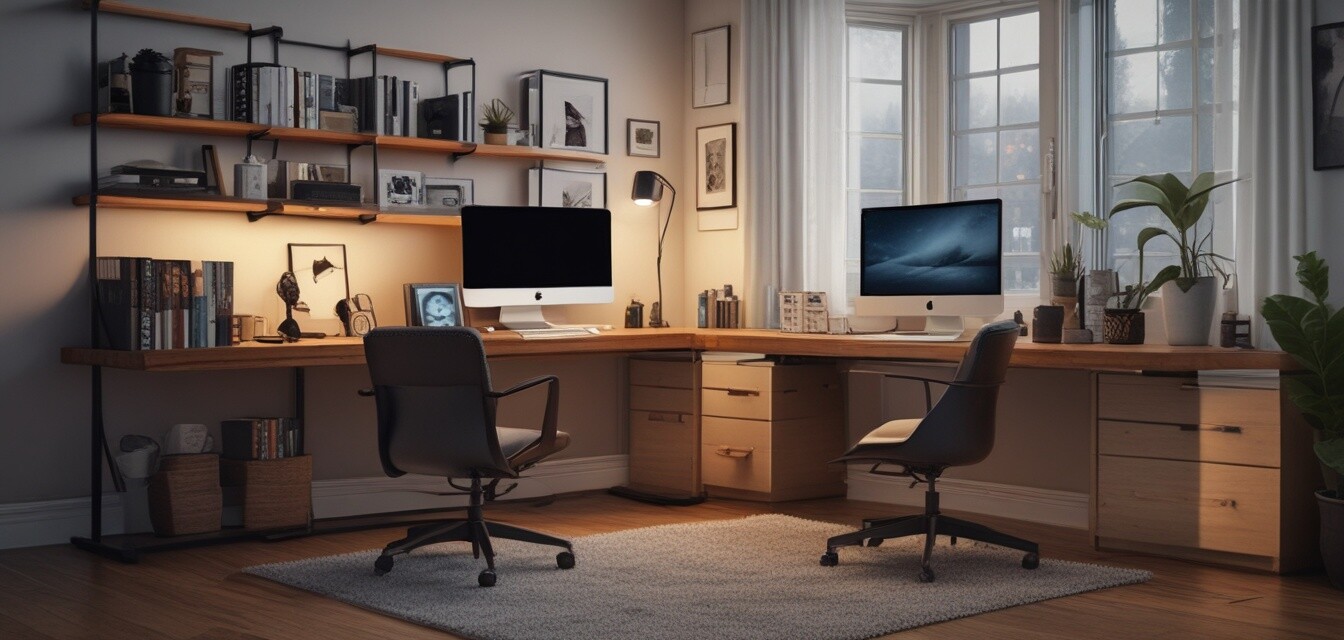
How to Set Up a Functional and Stylish Home Office
Key Takeaways
- Evaluate your workspace needs based on your work habits.
- Choose ergonomic furniture that complements your style.
- Utilize effective lighting to enhance productivity.
- Incorporate decor that inspires creativity and comfort.
- Organize your space for efficiency and focus.
Setting up a home office is a crucial step for anyone working remotely. It should meet your work needs while also reflecting your personal style. In this guide, we'll explore how to create a functional and stylish home office that can boost productivity and enhance your work experience.
Step 1: Identify Your Space
The first step in creating your home office is to identify where you'll set it up. Whether it’s a separate room or a corner in your living space, consider:
- Size: Ensure you have enough room for your work equipment.
- Lighting: Natural light is ideal. Position your desk near windows when possible.
- Privacy: Choose a location that minimizes distractions.
Step 2: Choose Your Furniture
Selecting the right furniture is essential for comfort and style. Here’s a breakdown of furniture components to consider:
| Furniture Type | Considerations |
|---|---|
| Desk | Choose a size that fits your space and allows for comfortable movement. |
| Chair | Invest in an ergonomic chair to support your back and posture. |
| Storage | Incorporate shelves or filing cabinets that blend well with your decor. |
| Lighting | Select a desk lamp that provides adequate light without straining your eyes. |
Step 3: Optimize Your Layout
Once you've chosen your furniture, arrange it for maximum efficiency. Consider these layout tips:
- Desk Placement: Face your desk toward the door or window to feel more welcoming.
- Accessibility: Keep frequently used items within arm's reach.
- Wiring: Use cable management solutions to keep your workspace neat.
Sample Layout Options
Here’s a quick overview of popular layout styles for home offices:
| Layout Style | Best For |
|---|---|
| Traditional | Those who prefer a structured approach with defined work areas. |
| Open Concept | Creative professionals who thrive in flexible, open spaces. |
| Modular | People who enjoy changing their setup frequently for different tasks. |
Step 4: Add Decorative Elements
Incorporating decor is a great way to personalize your office. Here are some ideas to consider:
- Wall Art: Choose artwork that inspires you or adds color to your space.
- Plants: Adding greenery can enhance air quality and aesthetics.
- Personal Items: Include photos or mementos that motivate and inspire.
Step 5: Ensure Ergonomics
A functional office also needs to be ergonomic to prevent discomfort. Pay attention to:
- Chair height: Your feet should be flat on the floor with knees at a 90-degree angle.
- Screen height: Position your monitor so that the top of the screen is at eye level.
- Wrist support: Use ergonomic keyboards and mouse to minimize strain.
Step 6: Final Touches
Once your essential elements are in place, add the finishing touches to create a harmonious environment:
- Color Scheme: Choose a color palette that reflects your style and promotes focus.
- Textiles: Include soft cushions or rugs for comfort.
- Organization: Utilize stylish boxes or folders to keep documents sorted.
Conclusion
Setting up a functional and stylish home office requires thought and creativity. Focus on creating a space that aligns with your work habits while expressing your personal style. With the right arrangement of furniture, decor, and organization, your home office can be an inspiring place that enhances your productivity.
Pros
- Transforms your workspace into an inspiring environment.
- Improves organization while adding aesthetic value.
- Enhances comfort and promotes better posture.
Cons
- Can require a budget for quality materials and decor.
- Time-consuming setup and arrangement process.
Tips for Beginners
- Start with a minimal setup and add elements as you go.
- Experiment with different layouts until you find what feels right.
- Keep your workspace clean and organized to maintain focus.
Explore more resources
For further insights into setting up the perfect workspace, check out our Buying Guides for detailed information on various computer accessories.
Additionally, explore our sections on Docking Stations and Ergonomic Chairs, which both play a crucial role in enhancing your home office experience.